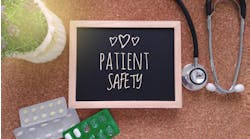Partners HealthCare is the largest healthcare network in Massachusetts, with a wide range of hospitals, clinics and ambulatory practices. Because of its size and diversity, it historically found it challenging to craft cohesive responses to EHR-related safety issues and communicate them efficiently across the organization. As Partners shifted to an enterprise Epic implementation from 2013 through 2017, it created a patient safety rapid response team to improve safety efforts.
Gianna Zuccotti, M.D., is the chief medical information officer for Partners, which is in the process of changing its name to Mass General Brigham. During last week’s virtual AMIA Clinical Informatics Conference, she described the evolution of the EHR safety program. “We had an increasing volume of safety events that we were addressing. These came from a very complicated variety of sources both within our own informatics teams, from our applications teams, but also from Epic directly,” she explained. “Not only was there high volume and multiple points of entry, the variety of events in terms of complexity and true risk was quite large.”
Zuccotti gave examples of the types of issues that would arise. It could be something as simple as a letter not transmitting to far more complicated things such as in-basket messages being marked as done before any provider had actually reviewed it.
To address the increasing volume of issues, 18 months ago Partners created a patient safety rapid response team. They established a position called the digital health medical director for quality and safety, and the person in that position oversees the rapid response team. She said the team has three goals: to complete event mitigation and give a standard and immediate response to that high volume and wide range and varied severity of events; to communicate and increase awareness of the problem and the solution and a timeline for the solution, as well as to get feedback as they complete the solution; and to do an after-action review to assess the particular response and improve the work of the rapid response team.
The first step is when a safety event is identified, and the digital health safety officer is notified. “She mobilizes what we call the executive safety management team,” Zuccotti said. That is a group of four people: the digital safety officer, the chief quality officer for the health system, the chief quality officer from one of our academic medical centers, and myself. The four of us decide if immediate action is needed. If it is, then we move on to the next step and convene our digital health safety event mitigation team, including our clinical informaticians, our quality and safety project manager, application team members and often the Epic tech support person for the relevant area.”
That team gathers information about the issue, assesses the impact on users and patients, and then works through the options for mitigation. The output of that group goes to an enterprise safety team, Zuccotti explained. That team is broader and includes the members on the prior team as well as the site-based patient safety officers.
“The event can stop after that second circle when the leadership team was notified,” she said. “We may say we will handle this internally and it is not a big risk, or we may carry it all the way out to individual provider and patient-level communication.”
The initial team is convened by phone or e-mail within an hour of an event being reported, she noted. “We make that decision about whether to escalate or not based on whether action is needed, and the team is assembled. We cascade out to individual sites when there is a need for communication or decision-making at a site. There could be multiple meetings of the enterprise safety events group until the event is completely resolved.”
Communication Processes
Zuccotti said the team spends a lot of time focusing on communication processes. The goal is to get timely and comprehensive updates via e-mails and meetings to the large number of stakeholders about the details of the event and the response. “If there is an immediate patient care impact, we can bypass these steps and notify people of the immediate action,” she said. “We have tiered our distribution list and communication hierarchy, with Tier 1 being our most urgent issues and communication engagement goes to the largest number of stakeholders; Tier 2 is in between; and Tier 3 is minimal or no risk.”
After-Action Review
Partners is interested in continual process improvement, Zuccotti said, “and we have changed something after every single event. We have about one event every six weeks on average, although we do tend do have clusters of them where they come more than once per week, and the management of one may overlap the initiation of another,” she said. Among the things they have improved on is the communication tiering —to call out the roles and responsibilities of officials in terms of how they communicate the event to their clinicians and sometimes patients. “We wanted to have a templated communication with clear action items and instructions,” she said. They also have created an MS Teams site where all the documents can be shared easily across the various safety response teams.
“This is a living, breathing thing,” Zuccotti concluded. “Despite our established processes and our team that now works together very efficiently, it is always enormously anxiety-provoking. There is a real urgency. Having a good business partner in Epic has been invaluable. This process has greatly improved our ability to respond in a cohesive and consistent manner.”


